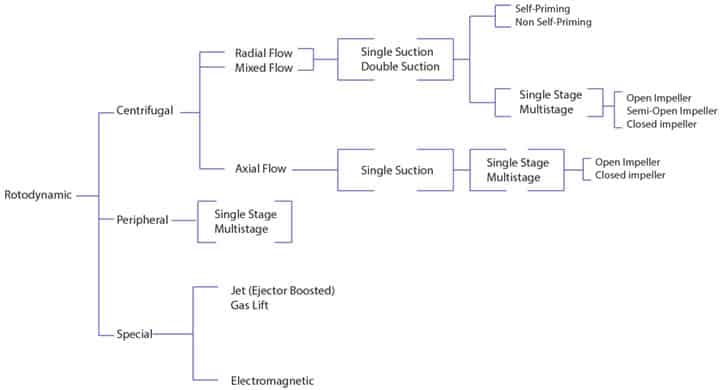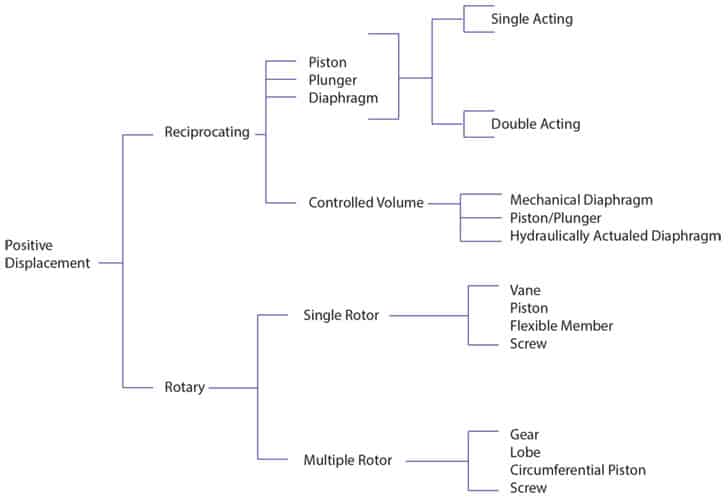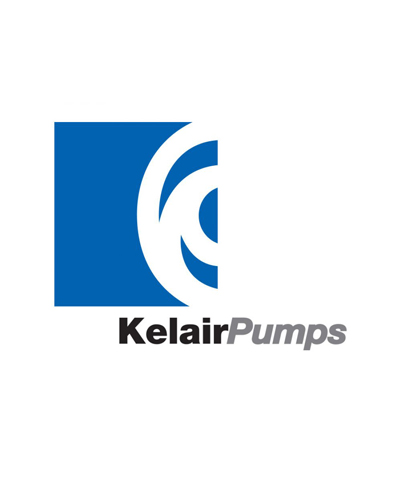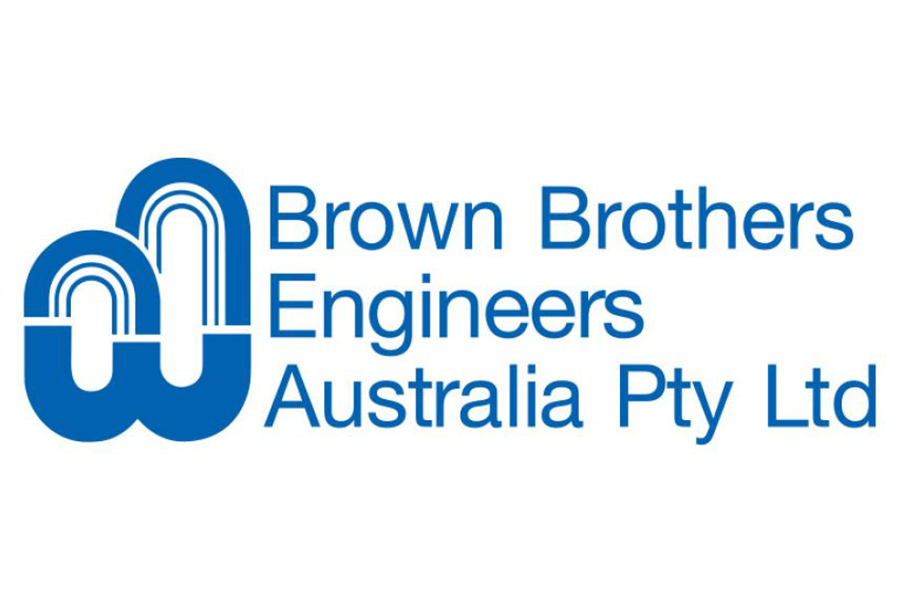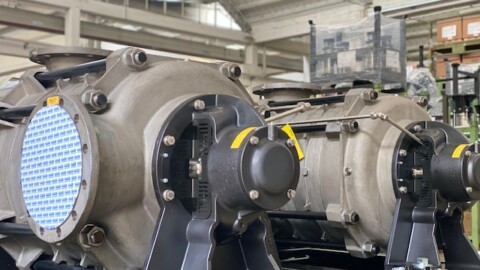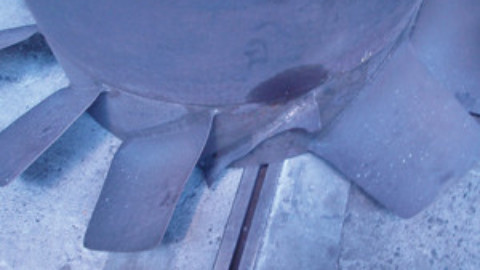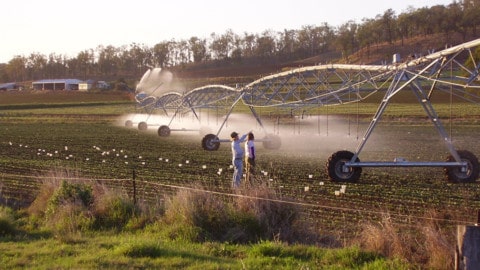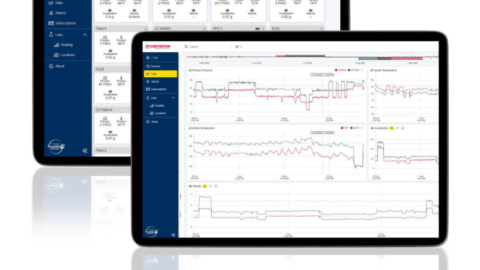Readers and PIA members will no doubt be familiar with the Australian Pump Technical Handbook, the book first published in the 1980s which has been the seminal text for the Australian pump industry for more than 30 years. In this new series, we’ll be featuring edited extracts from the book to introduce the next wave of the industry to this classic book; and remind others of the ongoing value it offers.
Anyone familiar with the pump industry will be well aware of the sheer breadth of different pump designs available and the vast array of different pumping applications. But how are all these different pumps classified? In this article, based on chapter two of the Australian Pump Technical Handbook, we look at the main differences between various pump types and the how these relate to function and classification.
Although a wide range of pumps are available for numerous applications, most fit into one of two main groups. These are:
- Rotodynamic pumps
- Positive displacement pumps.
Rotodynamic pumps
Rotodynamic pumps are those where energy is transferred to the pumped fluid via a rotating element, such as an impeller, propeller or rotor.
Types of rotodynamic pumps
There are many different types of rotodynamic pumps suited to varying applications.
Centrifugal pumps
Centrifugal pumps are a type of rotodynamic pump in which a shaft-mounted impeller rotates unidirectionally within the pump casing.
Centrifugal pumps can be subdivided depending on the type of impeller used:
- Radial flow impellers
The liquid enters the impeller axially and discharges radially, changing the direction of the flow 90°. These impellers can be single suction (where the fluid enters the impeller from one side) or double suction (where fluid enters from both sides). - Mixed flow impellers
The liquid enters the impeller axially and discharges in both radial and axial directions. Can be single or double suction. - Axial flow impellers
The liquid both enters and discharges from the impeller axially (i.e. the flow does not change direction). Single suction only.
Regardless of the impeller type, centrifugal pumps can be either single stage, where the total head is the result of one impeller, or multistage, with a series of impellers aligned in one casing.
Depending on requirements, centrifugal pumps can be either self or non self-priming and can have open, semi-open or closed impeller types.
Centrifugal pumps can also be identified by their basic mechanical configuration or characteristics. For example:
- Overhung impeller type
The impeller is mounted on the end of the shaft that is cantilevered from its bearing supports. - Impeller between bearings type
The impeller is mounted on a shaft between bearings situated at both ends. - Turbine type
Usually refers to vertical multistage deep well type pumps with diffuser casings attached to one another.
Other types defined by unique characteristics or functions include sump pumps, sewage pumps, slurry pumps and more.
Peripheral pumps
Peripheral pumps (also known as side channel or regenerative turbine pumps) are rotodynamic pumps where energy is transferred to the fluid within the cells of a vane wheel impeller with a large number of radial blades.
Peripheral pumps can be single or multistage and can come in various configurations.
Other types of rotodynamic pumps
Additional types of rotodynamic pumps exist and are defined by their unique functions. These include:
- Jet pumps
A high velocity jet of fluid is used to create a low pressure area in a mixing chamber, causing the suction fluid to lower into this chamber. - Gas lift
A gas pressure source is used to lift the liquid by mixing it with gas under pressure (usually air). - Magnetic drive pumps
A sealless type pump that uses a magnetic coupling device so that the external rotating part of the coupling is separated from the internal rotor. - Electro-magnetic pumps
A glandless pump where a magnetic field acts upon the medium (e.g. liquid metal).
Positive displacement pumps
Positive displacement pumps are pumps in which force is exerted upon movable boundaries of enclosed fluid containing volumes, resulting in a direct increase in pressure.
Types of positive displacement pumps
There are many different types of positive displacement pumps.
Reciprocating pumps
Reciprocating pumps are positive displacement pumps that incorporate a piston/plunger, diaphragm inlet and outlet valves, and a means by which the piston/plunger and diaphragm can be actuated (for instance, an electric motor, diesel engine or steam turbine). Types of reciprocating pumps include piston pumps, plunger pumps and diaphragm pumps.
Reciprocating pumps can be either single acting, where the liquid is discharged only during the forward motion of the piston, or double acting, where the liquid is discharged during both the forward and backward motions. Plunger and diaphragm pumps are single acting, while piston pumps can be double acting.
Reciprocating pumps can be further divided as:
- Simplex pumps
Containing one single or double acting piston/plunger. - Duplex pumps
Containing two single or double acting pistons/plungers. - Triplex pumps
Containing three single or double acting pistons/plungers. - Multiplex pumps
Containing more than three single or double acting pistons/plungers.
Controlled volume pumps
Controlled volume pumps (otherwise known as proportioning or metering pumps) are specialised reciprocating positive displacement pumps which provide precision control of very low rates with a flow rate accuracy typically within + or – 1{87a03eb4327cd2ba79570dbcca4066c6d479b8f7279bafdb318e7183d82771cf}. In construction, they are generally piston or plunger pumps, mechanical diaphragm pumps or hydraulically actuated diaphragm pumps.
Air operated double diaphragm pumps
These reciprocating positive displacement pumps are sealless, self priming and have the ability to run dry for long periods and will not over pressure.
Rotary pumps
Rotary pumps are positive displacement pumps that generally consist of gears, vanes, screws or similar elements enclosed within a casing. They have no separate inlet or outlet valves and fluid flows through the pump in a uniform stream.
These pumps can be divided into either single rotor or multiple rotor types. They can then be further classified by the pumping element.
Single rotor types include:
- Vane pumps (vane in rotor or vane in stator).
- Piston pumps (axial reciprocating or radial reciprocating).
- Flexible member pumps – where the vane, tube or liner is flexible enough to accomplish sealing and transfer fluid within the casing.
- Screw (progressive cavity) pumps.
Multiple rotor types include:
- Gear pumps (external or internal gear) – where the meshing of two or more gears provide the pumping action.
- Lobe pumps – where the rotors consist of one or more lobes which interact to transport fluid from inlet to outlet.
- Circumferential piston pumps – where liquid is transported in the spaces between the piston surface to the outlet.
- Multiple screw pumps.
Further information and detailed diagrams and schematics can be found in the Australian Pump Technical Handbook, available from the PIA website. In the next edition of Pump Industry we will take a detailed look at the characteristics of centrifugal pumps.



